Vickers Viscount Network
December 2011 Newsletter
Dear Member
Welcome to the December issue of our popular newsletter. The team here at the Vickers Viscount Network would like to wish you
a Merry Christmas and a Happy New Year. We thank you for your continued support and look forward to hearing from you with your
Viscount stories and photos in the coming year.
Transfer of the Ownership of G-ALWF
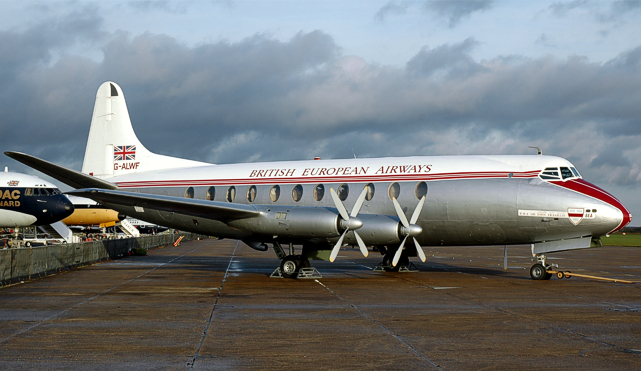
The Duxford Aviation Society is now the proud owner of Viscount G-ALWF
John Overhill Viscount Crew Chief at the Duxford Aviation Society proudly tells us of the transfer of ownership of the
oldest surviving Viscount c/n 5 G-ALWF.
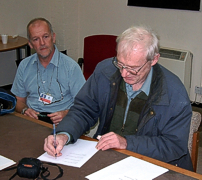
Paul St. John Turner signs
the title transfer document
"During the early part of 2011 I received a query from Brian Burrage, co-founder of the Vickers Viscount Network,
concerning the future of G-ALWF which was owned by the Viscount Preservation Trust, and had been placed in the care of the
Duxford Aviation Society on a 99 year lease which had commenced in 1976.
Seemingly this appeared to be a question which needed to be answered. As I was fortunate enough to have long time contact
with Romer Adams, one of the original Trust members, I decided to obtain his thoughts.
It appeared that apart from himself, only one of the original Trust members was still active, this being Paul St. John
Turner the chairman who resided in Jersey, Channel Islands.
Romer and I thought that a meeting between himself and interested parties of the Duxford Aviation Society should be arranged
to discuss the future, and perhaps even the transfer of ownership of the aircraft.
As a result a meeting took place at Duxford during June where proposals were put forward to transfer the ownership. The
proposals were communicated to Paul St. John Turner in Jersey who seemed to think, that subject to a number of conditions,
there was no reason why an agreement could not follow.
A document was drafted which was agreed upon, and a decision made to have the relevant documentation signed at Duxford on
26th November with Paul St. John Turner in attendance.
On the day of the handover it was extremely pleasing to welcome Paul St. John Turner who had flown over from Jersey
especially for the occasion, and who along with Romer Adams and signatories of the Duxford Aviation Society, completed the
official documentation.
The Duxford Aviation Society is now the proud owner of Vickers Viscount G-ALWF, and grateful thanks must go to Paul St.
John Turner and Romer Adams for allowing this to happen."
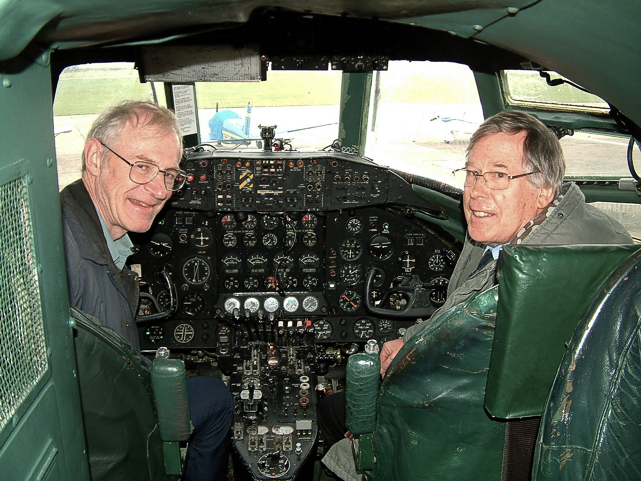
Paul St John Turner and Romer Adams enjoying sitting in the cockpit after relinquishing ownership
of 'WF' to the
Duxford Aviation Society. They formed the Viscount Preservation Trust in 1972
when they purchased 'WF' which meant
that they officially owned her for 39 years!
Canary Islands Viscount needs help
Ignacio Llaneza has sent us this appeal concerning V.806 Viscount c/n 264 EC-DXU ex G-AOYO
“I am the manager of the aircraft maintenance engineers’ training centre (CETAC) at Tenerife, Canary Islands, Spain. We are
interested in the restoration of a Vickers Viscount but I am unable to find the pertinent technical documentation (AMM, IPC
and WDM). The purpose of this message is to see if you have the mentioned documentation, or the way I could find them, as well
as any other useful info like spare parts etc. The cockpit is in very bad condition, it has no flight instruments, and also I’m
trying to find the instrument panels."
Best regards
Ignacio Javier Llaneza Muñiz
Gerente Responsible
CENTRO DE ENSEÑANZA TÉCNICA AERONÁUTICA DE CANARIAS ES.147.012
Carretera General del Norte C-820, edif. Star nave Nº 2. 38297 los Rodeos, La Laguna, Tenerife.
Tf. 922 650365
E-mail nacho@cetac.info
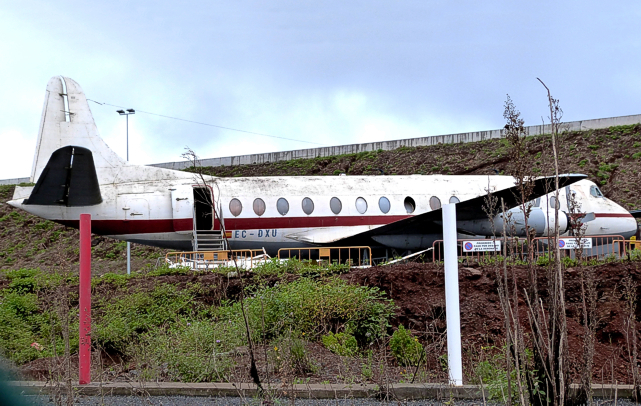
CETAC Viscount c/n 264 EC-DXU taken in November 2011 by David Gaskell
Positive news like this soon attracts attention from Viscount followers and Brian Burrage, our co-founder and historian,
promptly replied
"Thanks for contacting us regarding the ex LAC - Lineas Aereas Canarias Viscount at Tenerife Norte. We certainly hope that
you and your training centre engineers can keep this aircraft from being scrapped. Within the Vickers Viscount Network we have
a lot of technical data and can scan selected pages for you.
Below are photos of complete cockpits of sister aircraft c/n 412 G-APIM and c/n 266 G-AOYR to show how EC-DXU would have
looked when it retired and how it looked while with BEA - British European Airways in 1965."
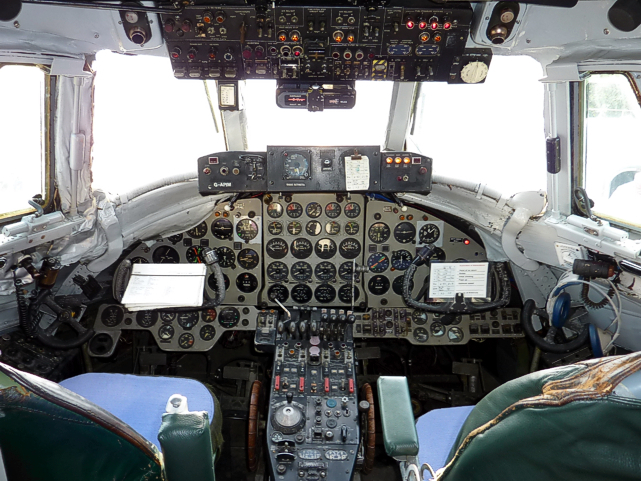
Cockpit of sister aircraft c/n 412 G-APIM at retirement
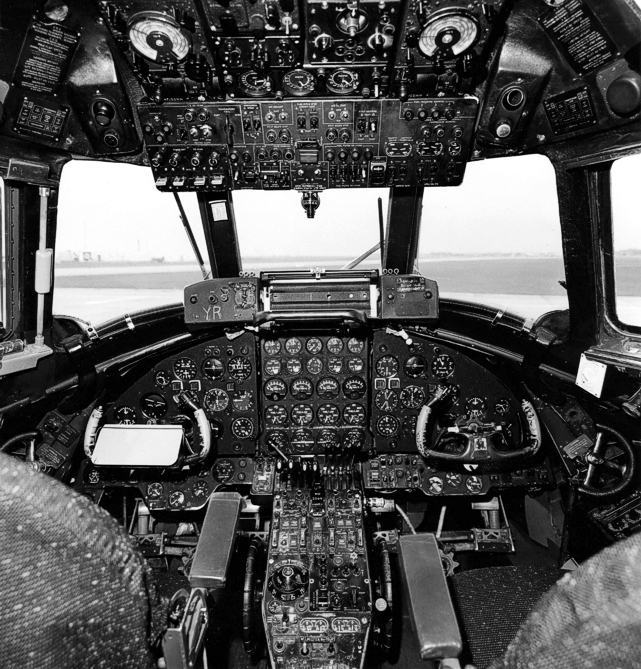
Cockpit of sister aircraft c/n 266 G-AOYR circa 1965
Brian went on to ask "Is the Viscount now formerly part of your training organisation? If so, will it be used for training the
engineers in any way? Good luck with your project and keep us informed of your progress and needs."
Ed Jones the Vickers Viscount Network librarian commented "I think it would be very beneficial for us to get involved in
the restoration of this aircraft. If it helps, we have in our library the following documents and all are scanned as pdf
and/or word docs."
V.800 Engineers Pocket Book
V.802 Pilot Notes/Flight Manual
V.807 Pilot Notes/Flight Manual
In addition David Gaskell reports that he has just returned from Tenerife where he photographed EC-DXU (see above). He
comments "Sadly in a bit of a bad way but a lovely sight. I remember so well as a child going to Manchester from Jersey on
many occasions on the fantastic Viscount, a real work horse."
Co-Pilot's seat required for Australian Viscount
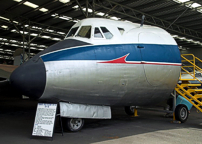
QAM - Queensland Air Museum
Ron Cuskelly, Vice-President and Webmaster of QAM - Queensland Air Museum, has appealed for help locating a co-pilot's
seat for their Viscount c/n 148 VH-TVJ nose section.
Ron and the team at the Queensland Air Museum know Denys Jones (Viscount c/n 283 ZK-BRF restoration team at Ferrymead) and
Peter Layne (our Newsletter Editor and New Zealand researcher) and adds
"I believe we have already exhausted the New Zealand angle (short of a midnight creative acquisition raid on Ferrymead).
Similarly we have a close working relationship with Mark Pilkington (Viscount c/n 318 VH-TVR restoration team at the
Australian National Aviation Museum) and I believe he is aware of our needs and reputation.
I've had a message from Vickers Viscount Network UK researcher Richard Stanton who has advised us where to find the
maker’s plate on the captain's seat. That might save us from shipping a non-compatible seat from the other side of the world!"
If anyone can help, please contact Ron by e-mail vice-president@qam.com.au
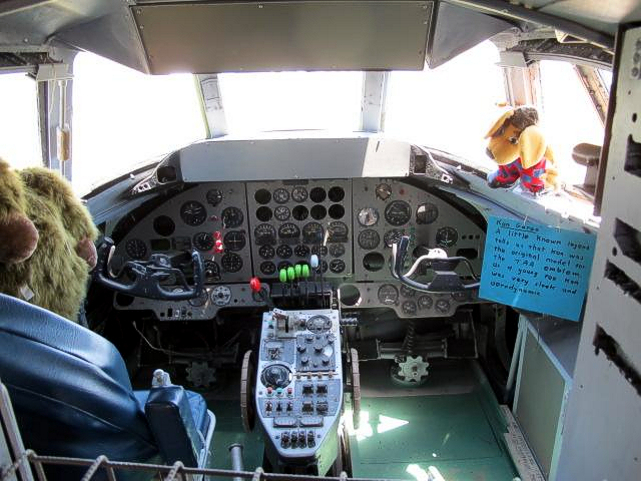
Co-Pilot's seat required for Viscount c/n 148 VH-TVJ
Cockpit seats in New Zealand Viscount
Ron Cuskelly's plea led to Denys Jones commenting
"One thing that I'm not sure of is whether the seats in our Viscount c/n 283 ZK-BRF are actually from a Viscount. When we got
her in 1974 the seats were gone and when the guys were restoring her in the 1990s (back in the Air New Zealand hangar at
Christchurch Airport) they obtained and installed the now present seats.
One of the guys told me that the seats were not from a Viscount but were close enough. I must admit I did wonder and
I have meant to look for the part number, but that's another of those jobs I have not yet got around to.
Can anyone confirm from what type aircraft these seats originated?"
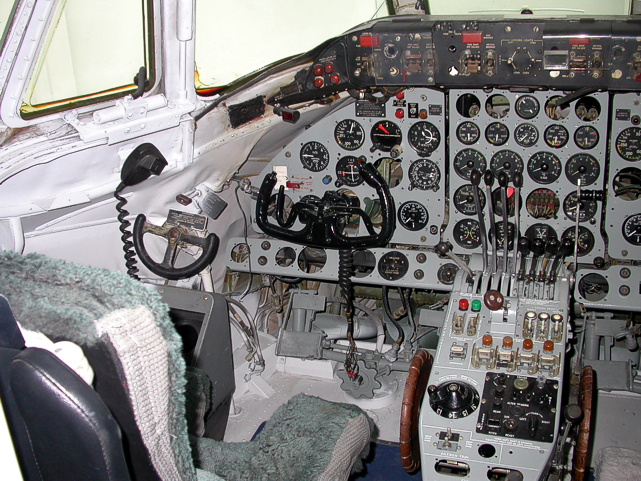
The non Viscount Captain's seat on ZK-BRF
Retired NAC - New Zealand National Airways Corporation Captain Jim Pavitt was consulted.
His wife Suzanne, who was one of the hostesses on NAC's first Viscount revenue service, aboard Viscount c/n 281 ZK-BRD on
3 February 1958, drew his attention to this newspaper cutting featuring a Viscount flight occurring a few days earlier. The
seats are rounded at the top and differ from those of the V.807 depicted above.
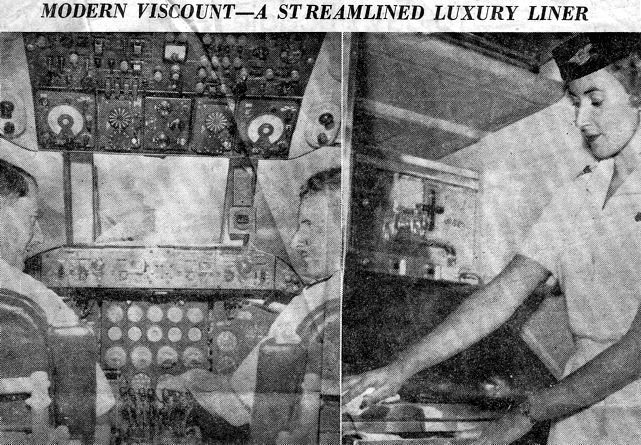
Captains Jack Register and Allan Kenning, and Hostess Lorna Clark on board ZK-BRD
New Zealand Viscount to get a Soul Mate
Denys also mentioned that Ferrymead is acquiring a Fokker F-27, ZK-BXG, well parts of it anyway. Other parts of ZK-BXG are
headed to QAM - Queensland Air Museum for use on their F-27 VH-FNQ.
Another aircraft (the cockpit section) which will also become a soul mate at Ferrymead, is former TEAL (Tasman Empire Airways
Ltd) Electra ZK-TEA, which for many years was the airline’s flagship. Already sharing the display hangar with the Viscount is
the front section of Bristol Freighter ZK-CRK.
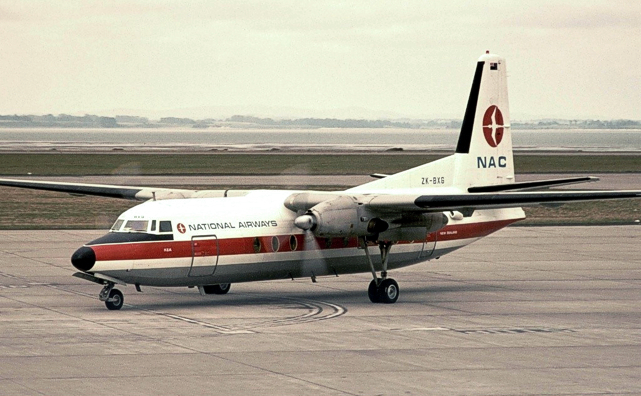
NZNAC Fokker F27 ZK-BXG taken on the 21 December 1974 at Auckland
Editor’s footnote: A few years ago I was in an e-mail discussion with Jim Pavitt regarding an aircraft which had
had an accident on 1 May 1967. I mentioned, in passing, that on that same day I had flown in F-27 ZK-BXG. His logbook revealed
that he had in fact been my captain that morning.
Under-wing paint on New Zealand Viscounts
... and finally from Denys
"I'm just about to put the detachable rear cowls on the starboard nacelles of ZK-BRF and have been attending to the painting
of the parts and the adjacent under-wing areas that were painted in a duck egg grey-green colour.
I reason that they were painted to protect the skin from the effects of the exhaust emission, and presumably to enable the
surface to be kept clean on the basis that the paint was easier to get the muck off."
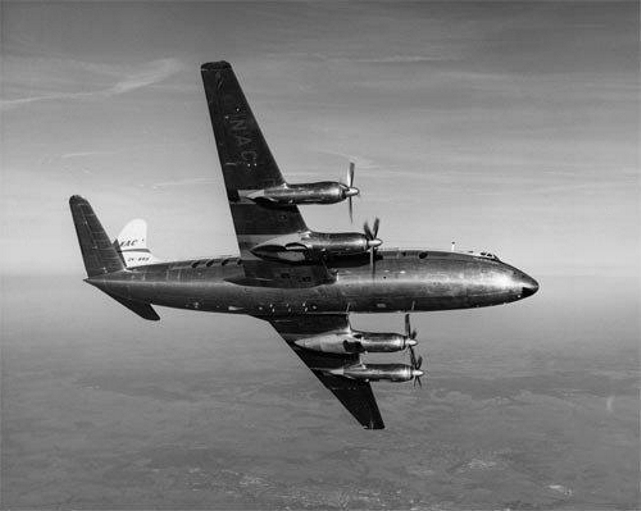
NZNAC Viscount c/n 281 ZK-BRD showing off her painted under wings
"I wonder if anyone can provide insight into the effects of the exhaust on the dural, the frequency of cleaning, and perhaps
if the Dart was a particularly grubby old thing etc, etc."
Comments please to Membership@VickersViscount.net
From Weybridge to New Zealand via TCA - Part 3
Evidently Viscount seats have a long history of causing headaches judging by Norm Hogwood’s latest instalment.
"Having been employed by NZNAC since 1961, I decided to take a trip back to the United Kingdom in 1965. This entailed a
TEAL (nowadays Air New Zealand) Electra flight from Wellington to Sydney and then a BOAC Boeing 707 to London via Darwin,
Singapore, Calcutta, Karachi, Beirut and Rome. The return flight took me to Frankfurt, Bahrain, Bombay, Colombo, Singapore
and then to Sydney where I again jumped on an Electra for the flight to Wellington.
It was during the stopover in Bahrain that a very strange thing happened, but first I must return to my days with
Vickers-Armstrongs.
One Friday my boss asked me if I could go to Heathrow the next morning to collect some aircraft seats that Air France was
shipping over for trial installation in one of their Viscounts. Reluctantly, I said I would although I could think of better
ways to spend a Saturday.
I chased all over the airport for those damned seats and gave up in despair.
On the Monday I told the boss and he was disappointed and suggested that perhaps Air France had slipped up. A little while
later he called me in and said that the Service Manager, John Davies, wanted him to sack me. The seats had been there
all the time and I had upset everyone’s plans by not collecting them. The boss managed to save my bacon and I lived to spend
more time gainfully employed by him.
Back to Bahrain: At 02:00 in the sticky heat there were just two aircraft on the ramp. Both were BOAC Boeing 707s, our one
going south, the other heading north. All up I suppose there were about 200 passengers and many of them, like me, headed for
the bar in the transit lounge.
As I made my way to the counter I realised I recognised the guy standing directly in front of me. It was none other than
John Davies. I tapped him on the shoulder and he nearly fell over.
It turned out he was heading home after a visit to NAC and Viscount customers in Australia. We bought each other a beer and
had a laugh over the Air France seats. Literally, ships that pass in the night!"
Another great recollection, thanks Norm. His fourth instalment will appear in the next newsletter.
RAF fly Viscounts to Berlin during 'Cold War'
Michael Joyce, who now lives in Australia, was recently sent our last newsletter by a friend in South Africa and has
taken the initiative to contribute his own story.
"I was Aircrew on Britannia aircraft with 511 Squadron at RAF Lyneham from 1962 to 1967, eventually becoming a Captain. This
was the only turbo prop military aircraft in service until the arrival of the Argosy and Andover."
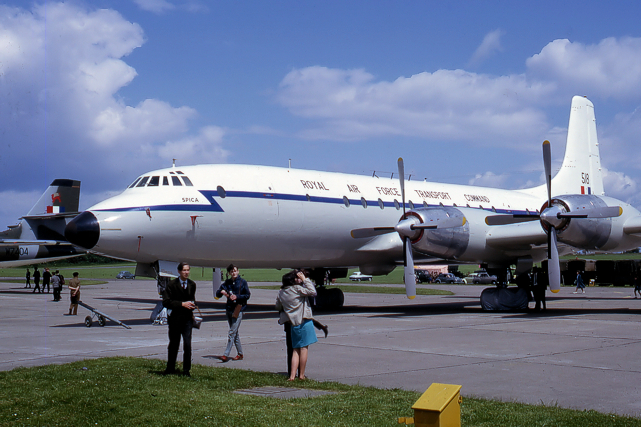
RAF Bristol Britannia XM518 'Spica' taken in 1964
"In 1963 through to 1964, the East Germans (Russians) at times tended to harass civil airliners in the corridors to Berlin.
The RAF - Royal Air Force decided to train two aircrews of Captain, Co-Pilot and Navigator, one from each Britannia Squadron
511 and 99 to fly empty or freight loaded Viscounts up and down the corridors to keep them open if things got too hairy for
the airlines. Being military we were of course expendable if a collision occurred.
We were stationed in Berlin for a week as BEA - British European Airways aircrew, even with their allowances, but without
uniforms. We flew several trips but did not touch the controls and looked over the shoulders of the BEA crew on their
standard flights. Our main interest was the use of the Decca Navigator, a splendid piece of equipment and the only aircraft
so fitted that I came across.
Before starting this we were sent to BEA Heathrow for some familiarisation with the Viscount V.802 at their Ground School
and used the Viscount Simulator, which was a black and white camera moving over a 3D map of Heathrow and its surrounds.
I ended up on one occasion with two engines out going through the approach lights before reaching the runway.
After what was considered sufficient Ground School we went to Stansted to meet and fly with Captain Nicolle of BEA
Training. We flew circuits and bumps with various engine combinations and were shown the short field landing technique of
flying up to the threshold at circuit height, power to idle and putting out full flap. The resultant dive to the runway at
such a steep angle was somewhat frightening."
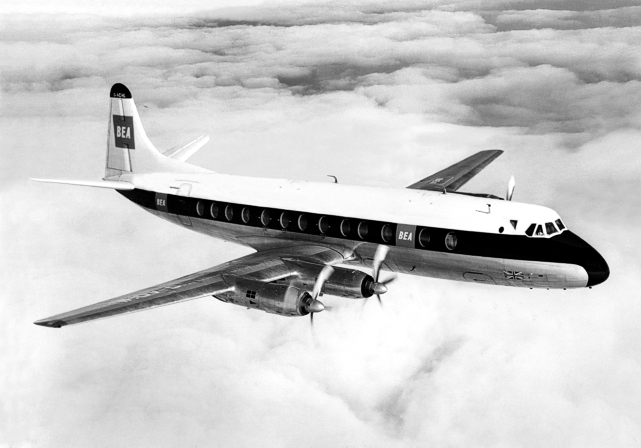
BEA - British European Airways Viscount c/n 161 G-AOHL
"Our crew did three tours to Berlin which were preceded by three trips to Stansted with Captain Nicolle. Aircraft used at
Stansted were: October '63 G-AOYT, March '64 G-APOX, June '64 G-AOYS. Each flight gave me 2.20 hrs. of experience. The 99
Squadron crew trained and flew alternatively to us. This requirement was turned over to the Argosys as soon as they
came on line.
A most unusual experience for us as BEA civilians, when this operation was at the time supposed to be secret, was my
first arrival at the hotel in Berlin where I was greeted by the person behind the desk: 'Welcome Flying Officer Joyce'.
Finally, I believe that the Americans and French were also doing this kind of thing though we never met any of them."
'Dog Whistles' flight attendants
Jim Griffith has sent in some stories to share with us and we will slot them into upcoming newsletters.
In 1950 Jim joined the RCAC - Royal Canadian Air Cadets and in time he went on to join the RCAF - Royal Canadian Air Force,
Aer Lingus, and TCA - Trans-Canada Air Lines/Air Canada from where he retired from flying in October 1997.
"Back in the days of props some of the escapades that flight and ground crews inflicted on each other, in today’s straight
jacket of political correctness, could be seen as being cruel and insensitive, which indeed there is no doubt some of those
so called practical jokes were.
Mostly though, they were innocent, quite harmless stress relievers and if judged in the context of aviation cultural
traditions back then, were accepted as a rite of passage; an initiation into the close knit community of aviation. Aside
from the well-worn request for some junior neophyte whether pilot, mechanic or flight attendant to go get a bucket of prop
wash, here are some of the more innocuous recollections of the fun and games indulged in during the heydays of the late
sixties and early seventies.
It was an era when it was considered more important to have a sense of humour than to have the latest hand held electronic
device for amusement.
Now on to the turbo-prop Viscounts, or 'Dog Whistles', so named for their ability to convert jet fuel into noise; a high
pitched, teeth gritting whine well above the audible frequency that drives dogs and cats and other animals, and even some
humans into a frenzied acoustic shock.
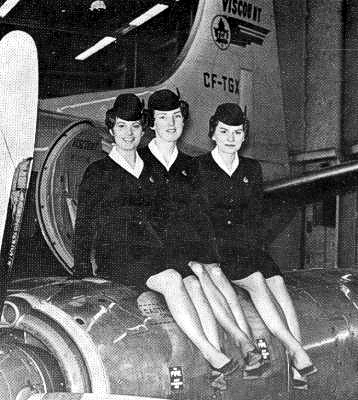
Can anyone identify these three ladies?
It was often said by pilots, when referring to flight attendants, that at least turbine engines stopped whining when they
were shut down at the ramp. No need for flight attendants to get their knickers in a knot because the truth be told it was
usually the flight attendants that had the last laugh. They, after all, were the last people to handle the pilots' food and
drink before it went down their gullets.
Woe betide any mean spirited pilots who thoughtlessly or otherwise humiliated their fellow ship mates for it provided means,
motive and opportunity for ugly retaliation.
In the mid to late sixties on an upswing in the never ending cycle of good years and bad in the industry there was a hiring
frenzy. It produced a new youthful image to the airline. It also resulted in a plethora of pilot promotions from First Officer
to Captain.
Some of the, 'older', flight attendants now had a chance to harass some of the new front end sprogs.
The normal routine on short-haul Viscount flights was for the flight attendants to come up front to the cockpit, if they
weren’t already standing there for the take-off, oops; to take drink orders as soon as the wheels had safely thumped onto
the up-locks.
This was nothing in the way of deferential or preferential treatment for pilots, rather the flight attendants wisely learned
to take care of the pilots first so that they wouldn’t be interrupted with a cockpit request half way through their meal
service.
Coffee was usually the beverage of choice as it was on this particular morning on a flight under the command of a
particularly baby faced newly promoted captain. Although lithe and slim he had cute little chubby cheeks that would have done
the, 'Gerber' baby food commercials proud.
Much to the sprog Captain's chagrin the flight attendant first handed the left-seater his coffee careful so as not to spill
any on the radio console, then with much exaggerated aplomb presented the Captain with a baby-bottle filled with milk, topped
with a rubber nipple on a tray that also contained a diaper."
Wonderful Capital Viscounts
Retired Captain Dick Russell has provided us with his experiences flying Viscounts for Capital Airlines.
"I was hired by Capital Airlines on 27 June 1955. My first interview occurred about ten days prior to that date and that is
when I got my first look at a fantastic aircraft that I soon found out was a Vickers-Armstrongs Viscount V.745D."
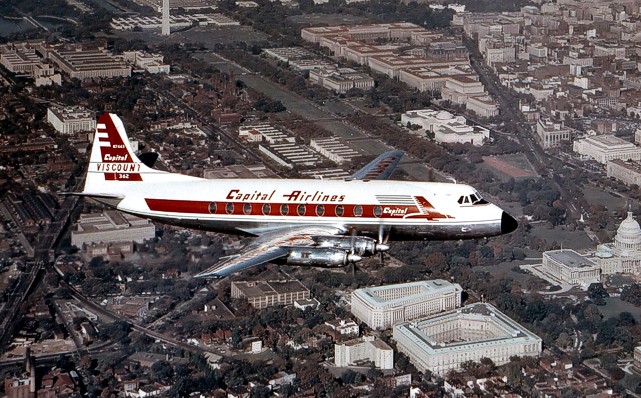
Capital Airlines Viscount c/n 199 N7443 over Washington, DC
"Being a junior birdman I had to wait until 1956 to become a Viscount co-pilot. During the next 7 years I logged 5,000 hours
in what I considered a wonderful aircraft.
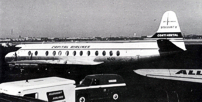
N242V while on lease
to Capital Airlines
When two V.812 series Viscounts (N242V c/n 356 and N243V c/n 354) of Continental Airlines were leased, I was one of just a
few co-pilots to be checked out. It was quite a lot of fun and the redline allowed us to descend almost as fast as the Douglas
DC-7, which we raced from La Guardia New York to Chicago Midway on a daily basis.
The Viscount had some shortcomings and range was one of them. VMO (Velocity Maximum Operating) was another limitation. Initially
it was 238 kts and later it was reduced to 233 kts. Management attempted to operate this aircraft on stage lengths that were
just too long except when the weather was good. This caused the plane to get a bad name because of the frequent fuel stops
that became necessary.
If I remember correctly, our V.745Ds held 15,390 pounds of fuel and I can’t remember the capacity of the V.812s, but believe is
was slightly more. We could stretch it to about 4 plus hours but the weather had to be very good and we could not accept any
air traffic delays.
A number of years ago, I contributed to the restoration of a V.745D being done by the Mid Atlantic Air Museum in Reading,
Pennsylvania. I have never heard from them since that time even though they promised, several years in a row, to do a flyover
of a Capital Airlines reunion picnic.
When this fantastic plane disappeared from the scene it was almost forgotten. Thank you for keeping it alive."
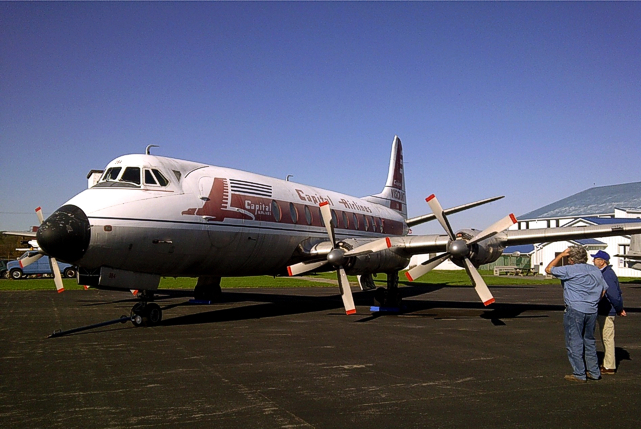
Mid Atlantic Air Museum Viscount c/n 233 N7471 taken in October 2011
Carl B Jordan, who is also a retired captain, adds
"I was hired by Capital Airlines on 6 August 1956, a little over a year behind by long-time friend, Dick Russell. I
had to sit behind him on the pilot's seniority list for some 35 years before he moved off the list ahead of me.
Like Dick, I too enjoyed flying the Viscount. It was very popular with the travelling public, and Capital became the number
one airline on the Chicago-Washington and the Chicago-New York routes. At that time, they were the two top passenger-carrying
routes in the world. The passengers enjoyed the smoothness of the engines and also the large windows in the cabin.
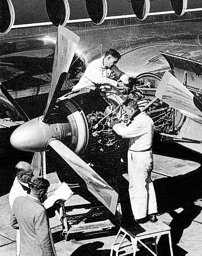
Rolls-Royce Dart
The advertising slogan was 'A New Sound in the Sky'. Our Viscounts were originally powered by the 506 series of Rolls-Royce
engines, but eventually the entire fleet was powered by the 510 series.
Rolls-Royce was noted for their craftsmanship. It turned out that there were no gaskets in the engines. They were machined
to such close tolerances that gaskets were not necessary.
The outboard props swung close to the ground. Initially, there were several instances where the outboard props were bent
after coming into contact with runway or taxiway lights. A real culprit was Elmira, NY. They had installed higher than usual
taxiway lights so they would appear over the top of a heavy snowfall. Captains learned to be especially careful when taxiing
the Viscount to avoid damage to the outboard props.
I hope Dick won’t mind if I make a correction. The VMO on all of the Viscounts varied from 238 kts down to 233 kts, depending
on the amount of fuel in the wings. If the wings became light, then the VMO was reduced, accordingly. The VMO didn’t vary with
the aircraft model.
He’s right in stating that four hours was about tops in endurance. However, one winter night, I was flying with Captain
Bob Klienke from Cleveland to Miami. We stayed airborne for 5 hours and 19 minutes that night. My wife happened to be
on board. She said that the stewardess (that’s what they were called back then) kept complaining that her watch was wrong
'- - because we just could NOT be airborne this long.' But, we were. Of course we were rather tight on fuel when we touched down.
Another nice thing about the Viscount was that it sure had a soft landing gear. However, if the captain happened to stub his
toes on a landing, then the co-pilot was naturally expected to stub even harder on his next landing. One NEVER showed up the
captain!
We used to tick-off the guys flying DC-6s and Connies because we didn’t have to get into line in the run-up box. We’d taxi
from the gate and announce to the tower that we were 'ready for take-off'. The piston-powered guys were frustrated that we
didn’t have to get into line behind them and were cleared for take-off.
Also, for a while Capital got away with a little known fact. Unlike high octane gasoline, in those early days Viscount
fuel (kerosene) was not encumbered with an 'aviation fuel tax'. It took a while for the powers-that-be to catch on and fill
this loop-hole. Finally, Capital had to 'Pay the Piper'. This just proved that old adage about death and taxes."
We must not forget
Terry Bannon contacted us several years ago about the tragic accident involving BEA - British European Airways
Viscount c/n 63 G-ANHC in which his father James Bannon lost his life, and the memorial he had just erected near
Nettuno, Italy. Since his story was published on the pages of the Vickers Viscount Network in December 2008, he has
been contacted, via our museum, by several relatives of people who also lost their lives in the crash.
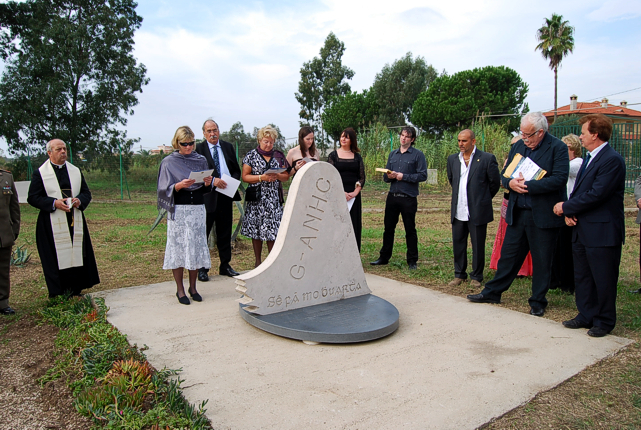
The G-ANHC memorial was unveiled in April 2006
Sally Dowdle has just sent us this message
"I have just found your website whilst searching for information on the crash that my father dies on.
I saw the article on Terry Bannon whose father dies in the same crash as mine over Anzio, near Nettuno in Italy on 22
Oct 1958. I was just 10 months old when my father was killed, and have been considering trying to go out to where he was
killed, and have been researching to find out exactly where it was. I wondered if you could pass my details on to Terry as
I would love to find out any other details.
My father was Brian Fogaty, a newspaper photographer for the Daily Sketch, and I have some of the articles that
were printed at the time – there was a 3 person team flying out with a model who was going to confront her lover, who I
believe was a Prince.
As well as him being able to maybe give me some information I would be happy to copy the articles I have and send them to
him. I realise your article was written in 2008 and I am hoping that you may still have his details."
The team here at the Vickers Viscount Network have been very happy to pass on Sally's details to Terry.
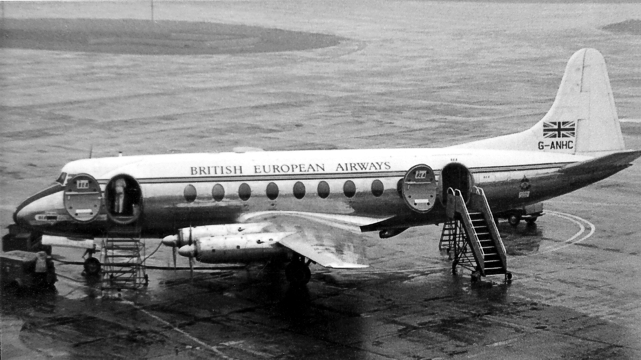
BEA - British European Airways Viscount c/n 63 G-ANHC
on which Sally's and Terry's fathers died in 1958
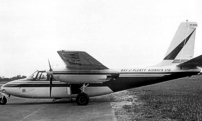
Aero Commander ZK-BWA
For many years our Newsletter Editor and New Zealand researcher Peter Layne has been involved in the dedication of
plaques to mark aviation accidents in New Zealand, and has shared in considerable moments of sorrow and closure.
On 21 November 2011 a plaque, designed by Graeme McConnell, was dedicated at Tauranga Airport to mark the 50th
Anniversary of the accident involving Aero Commander ZK-BWA overhead Mount Ruapehu. The starboard wing had come off due to
progressive structural failure of the spar cap.
Over the years the accident has been shrouded in controversy as to exactly what happened. Among the 250 attendees of the
unveiling was Steve Swift, former Fatigue Evaluation Engineer of Civil Aviation Safety Authority in Australia, who
later gave a presentation on structural failures.
He presented a photo of MMA - MacRobertson Miller Airlines Viscount c/n 45 VH-RMQ and focussed on the starboard wing. He
specifically mentioned that the wing failed just days after the image was taken.
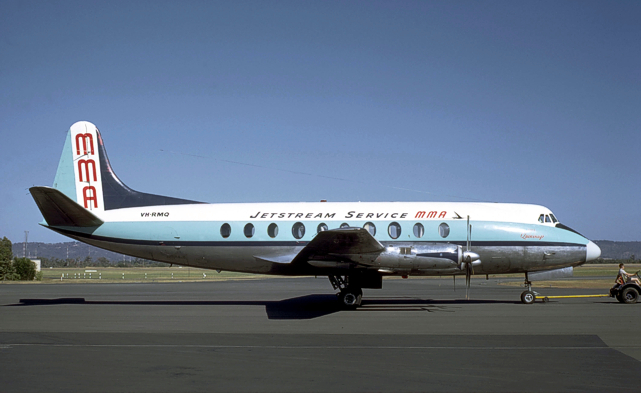
MMA - MacRobertson Miller Airlines Viscount c/n 45 VH-RMQ
taken just days before it crashed
The Union Flag
Those of you who attended the 'Brooklands Viscount Day' in October would have seen the great work that the team working on
Viscount c/n 412 G-APIM have been accomplishing.
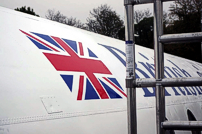
The Union Jack
John Woodhouse, the Brooklands Museum's Viscount team leader, reports that the Union flag has now been applied.
Considerable discussion has resulted on this subject including the convention of flag placement on aircraft.
In case you are not aware, airlines which are members of ICAO (International Civil Aviation Organisation) follow the
convention that the fuselage serves as a flagpole when the country’s flag is applied. On the port side the flag is presented
as you would expect to see it (left to right) but on the starboard side it is in the reverse fashion as if you were seeing it
(right to left) which would happen if you went round the other side of a flagpole, or if the flag changed direction.
John also mentioned that the flag is right way up. Don’t be fooled into thinking that the Union Jack doesn't have a top and
bottom.
All things Southend Airport
Vickers Viscount Network UK researcher Jamie Popplewell has been looking through 'Flickr' for all things Southend
Airport. During his research he found these Viscount photos, not all from Southend Airport.
He says, "For those who have not been on 'Flickr' please enjoy the following links:-"
http://www.flickr.com/photos/ianfuller/80666337/
http://www.flickr.com/photos/easyflyer9/5486149042/
http://www.flickr.com/photos/short_rach/1096346762/
http://www.flickr.com/photos/ianfuller/80666414/
http://www.flickr.com/photos/24101413@N03/3256647724/
http://www.flickr.com/photos/rinkratz/3536635080/
Website not available
For 36 hours in November our website was not available. The company that hosts our website, 1&1, had suffered a major server
problem that caused our site, along with many others, not to work. Be assured that all steps were taken by our co-founder and
webmaster Geoff Blampied to have the problem resolved as quickly as possible.
We apologise for any inconvenience caused and thank you for your patience. This was the first major crash of our website since
2005 when we had several days without a service.
Visitors from 89 countries/territories
Geoff has provided some impressive facts about our website for the period 19 October to 18 November 2011.
We had 4,353 visitors from 89 countries/territories
The average number of pages visited was 5.62, the highest average in one day was 8.72 pages visited
The average time on site was 5 minutes 7 seconds, the highest average on one day was 8 minutes 46 seconds
51.92% of these visits were from new visitors, 48.08% were returning visitors
24,449 pages were issued
545 visitors visited 201 or more times
259 visitors visited more than 20 pages during a visit
Our most popular page is the latest 60 photos added
In the last week of November, 48 new photos were loaded.
If you look at the top of any webpage on our site you will see the current number of Viscounts photographs loaded.
How to send us information and photos
To provide information and photos for inclusion in the Virtual Museum or our Newsletters, please send them to:-
Membership@VickersViscount.net
Photos should be scanned as a JPEG (.jpg) ideally producing an image of at least 600 KB to give us something to work from.
Scanning prints at 600 DPI and slides and negatives at 1,200 DPI usually produces good results.
Don't worry about the condition of your photos as we can work wonders with most images that have strange colours or dust
marks, blemishes etc.
Newsletter Editorial and Production Team
Peter Layne - Chief Editor, Wellington, New Zealand.
Ed Jones - Editor, Manchester, England.
Dave Robinson - E-mail Production, Nottinghamshire, England.
Geoff Blampied - Website Production, Norwich, England
Although every endeavour is made to find an answer to questions, please appreciate that the team here at the Vickers Viscount
Network are all unpaid volunteers who fit this work in with their daytime jobs and chores around home. Any opinions expressed
in this publication are not necessarily those of the Vickers Viscount Network or the Newsletter Editors.